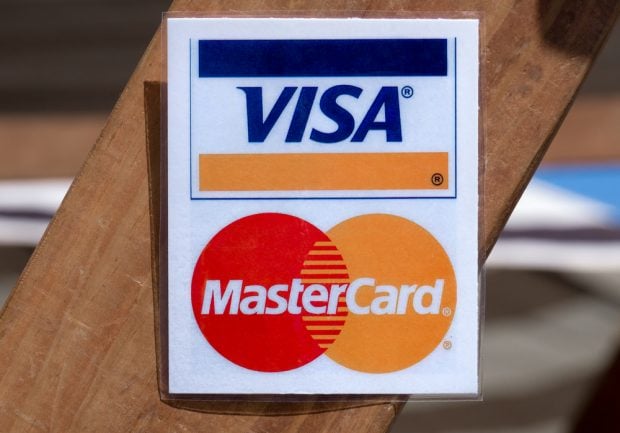Like a school boy standing up to a playground bully, CSCU wantedthe attendees and the entire credit union industry to understandthat credit unions can make money with their credit card portfoliosand that these portfolios are and should remain an integral creditunion product. That sub-theme bubbled just below the surface ofmany of the conference's sessions. Gary Raddon, Chairman of theRaddon Financial Group, a leading financial research and consultantfirm, set much of the underlying tone in his opening presentationconfronting what he called the "myths" underlying some creditunions' fears about their card portfolios, for example that creditunions cannot compete in the card market. "Who says we can'tcompete," Raddon asked, his voice moving steadily between adown-home Harry Truman and a pumped up church evangelist. "I havenever seen anything that came out of research that suggests that istrue. Now, we may give up, we may lay down, but there is nothingthat says that if we go toe to toe we will lose." While everyone is"running around with their hair on fire" about their credit cardbusiness and portfolio, Raddon told the 500 credit union cardexecutives present that RFG's data showed that credit cardsrepresented an integral part of a credit union's product line andshould not be jettisoned without a lot of consideration beforehand."You would be hard pressed to come up with an argument to sell aportfolio," Raddon added. "Now if you are willing to lie down anddie then," he said, letting his voice fall, "sell, and better todaythan tomorrow. But you're not, because that's not what this [creditunion] business is all about." Much of Raddon's talk centeredaround an underlying theme of the conference, which was to helpcredit unions better understand just what it is that they have intheir card portfolios and how the cards serve to cement creditunion members even more firmly to their CUs. He pointed out, forexample that credit union households that have even a basic VISA orMasterCard, which is the majority of credit union households, stillhave higher balances per household and use more credit unionservices than do households without a card. He peppered hispresentation as well with examples of some of RFG's credit unionclients, each one a larger credit union, which used mixtures ofcard offerings, employee incentives, introductory rates and cardintegration to dramatically increase their card penetration. In its"peer panel" session, which featured a mock boxing ring andparticipants barefoot, wearing boxing gloves and beating up aninflatable doll dressed in a business suit which was meant torepresent the monocline card issuers, the credit union cardexecutives which had found success with their portfolios reportedand basked in their success. Elaine Robbins, CEO of the $20 millionHuman Services Employees CU headquartered in Atlanta, said hercredit union saw a 6.9% increase in total accounts, a 3.3% increasein total outstandings, a 14% increase in volume and a 19.4%increase in usage, all on a budget of roughly $1,000. The campaigninvolved identifying credit union members with credit scores ofmore than 600 and sending those members a VISA pre-approvedapplication. They also saved postage by mailing the applicationswith checks and correspondence already going out to that member.The credit union also worked with its staff to provide incentivesfor handing out VISA applications and in general managed to acreate an atmosphere in which the credit union's staff came to feelownership for the credit card product, she related. Robbins toldthe meeting about how a friend of hers, also a credit union CEO,had "pestered" her into attending her first CSCU conference lastyear. It was at one of the sessions of the sessions that Robbinshad become inspired to do try with Human Services' portfolio whatothers had managed to attain with theirs, she said. She wasn't theonly one. Kelly Gaughan, card coordinator with the $50 millionBellco FCU headquartered in Wyomissing, Pennsylvania, told thesession of how her credit union had averaged only two newcardholders a month and had only 111 of its 7,500 members carryingits platinum card. But rather than give up, the credit unionadopted a promotional campaign that saw it cut the annualpercentage rate from 10.99% to 8.90% and offered an introductory6.90% rate. Bellco also adopted employee incentives, as well asindoor and outdoor posters and banners, receipt messages, telephoneon-hold messages and other measures. In the end, for their $4,000budget, Bellco saw the number of Platinum cardholders' increase by111% at the end of the 90-day promotional period, Their salesvolume jumped by 184% in 2003, as well. In addition, the creditunion increased the average number of new cardholders by 70% andmonthly sales volume increase by 14.00% But cards were not the solesubject of CSCU's presentations. Jason Dias, an historian, gulf warveteran and an expert in generational marketing, delivered a strongpresentation about credit unions' need to address the differentgenerations of their members differently. For example, creditunions should consider marketing themselves as sources of "discountbanking" in order to connect with potential Generation Y memberswho are among the more bargain conscious of American generationssince the generation that lived through the Great Depression andWorld War II, Dias told the attendees. He urged that credit unionsnot be afraid of the arguments they are having with banks, notingthat "you have to have those arguments and you are going to bestronger for having had them." But he urged credit unions not tolose sight of the next generation coming up on their marketingagendas as they fought with banks over this generation. "Today yoursole proprietor is as likely to be 24 years old as he is to be 65years old," Dias said. "If a significant percentage of Generation Ychooses `click alone dot com' for their first mortgage or for theirfirst car loan or their first line of credit or for their firstcredit card, banks and credit unions will not have the time or themoney to fight with another," he added. "You need to go out and getthese guys right now. You lock them up early; you lock them." Diassaid, adding as he did often in the course of his presentation."History is. You can change with it, or you can be changed by it."Dias' high energy presentation typified a conference that, despitethe serious and sometimes technical subject matter, remained funand active. Rock music, laser light shows and drum solos openedsome of the sessions. At the opening reception, an actor whose headwas made up to look like part of a centerpiece of fruit, startledattendees and set them buzzing about something other than cards.(see picture on page 32) Then there were the presentations by VISAand MasterCard marketing executives, who gave reviews and previewsof both current television advertising campaigns as well as thosejust over the horizon. In general, conference attendees appearedvery satisfied with how much they had learned at the conference,and appeared inspired as well to take the information home and putinto practice. "We always come to this one" said Ron Barrett, avice president with Randolph-Brooks FCU, a 42 billion facilitylocated in the San Antonio, Texas, area. "Every credit union thathas a card program ought to attend at least one of these. We alwaysget ideas here." -
|Complete your profile to continue reading and get FREE access to CUTimes.com, part of your ALM digital membership.
Your access to unlimited CUTimes.com content isn’t changing.
Once you are an ALM digital member, you’ll receive:
- Critical CUTimes.com information including comprehensive product and service provider listings via the Marketplace Directory, CU Careers, resources from industry leaders, webcasts, and breaking news, analysis and more with our informative Newsletters.
- Exclusive discounts on ALM and CU Times events.
- Access to other award-winning ALM websites including Law.com and GlobeSt.com.
Already have an account? Sign In
© 2024 ALM Global, LLC, All Rights Reserved. Request academic re-use from www.copyright.com. All other uses, submit a request to [email protected]. For more information visit Asset & Logo Licensing.









